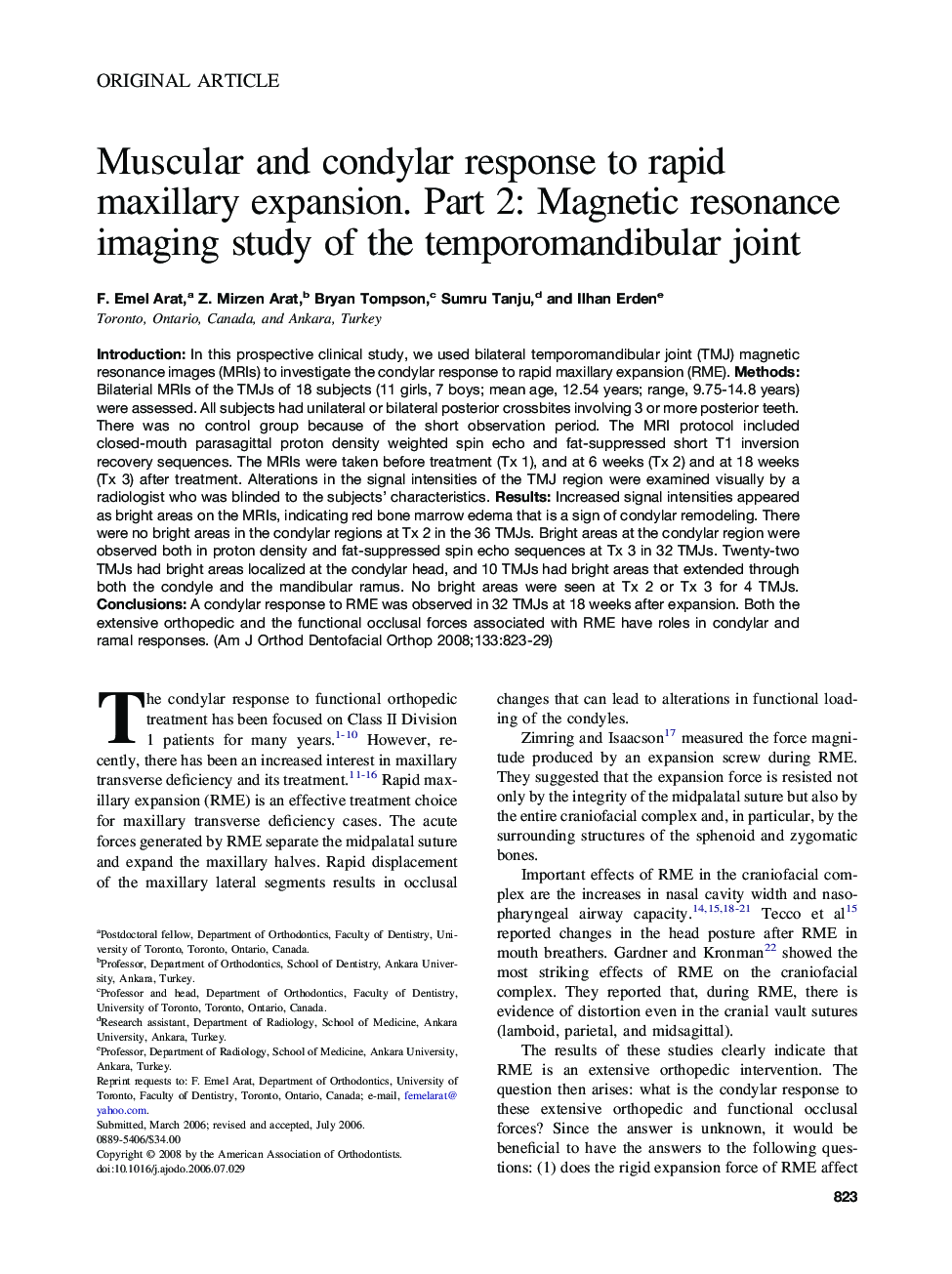| Article ID | Journal | Published Year | Pages | File Type |
|---|---|---|---|---|
| 3119091 | American Journal of Orthodontics and Dentofacial Orthopedics | 2008 | 7 Pages |
Introduction: In this prospective clinical study, we used bilateral temporomandibular joint (TMJ) magnetic resonance images (MRIs) to investigate the condylar response to rapid maxillary expansion (RME). Methods: Bilaterial MRIs of the TMJs of 18 subjects (11 girls, 7 boys; mean age, 12.54 years; range, 9.75-14.8 years) were assessed. All subjects had unilateral or bilateral posterior crossbites involving 3 or more posterior teeth. There was no control group because of the short observation period. The MRI protocol included closed-mouth parasagittal proton density weighted spin echo and fat-suppressed short T1 inversion recovery sequences. The MRIs were taken before treatment (Tx 1), and at 6 weeks (Tx 2) and at 18 weeks (Tx 3) after treatment. Alterations in the signal intensities of the TMJ region were examined visually by a radiologist who was blinded to the subjects' characteristics. Results: Increased signal intensities appeared as bright areas on the MRIs, indicating red bone marrow edema that is a sign of condylar remodeling. There were no bright areas in the condylar regions at Tx 2 in the 36 TMJs. Bright areas at the condylar region were observed both in proton density and fat-suppressed spin echo sequences at Tx 3 in 32 TMJs. Twenty-two TMJs had bright areas localized at the condylar head, and 10 TMJs had bright areas that extended through both the condyle and the mandibular ramus. No bright areas were seen at Tx 2 or Tx 3 for 4 TMJs. Conclusions: A condylar response to RME was observed in 32 TMJs at 18 weeks after expansion. Both the extensive orthopedic and the functional occlusal forces associated with RME have roles in condylar and ramal responses.
